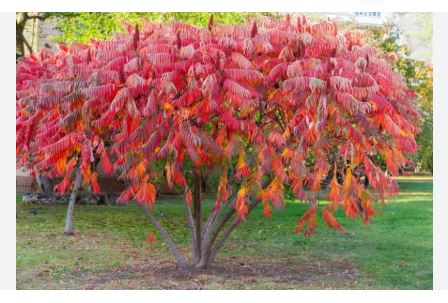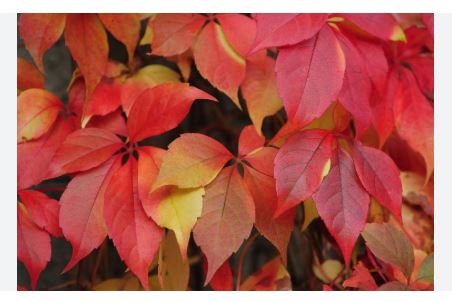
Shrubs with red leaves add a dramatic and vibrant touch to landscapes, providing year-round or seasonal color that can change with the seasons. These plants can have foliage that ranges from deep burgundy to bright scarlet, offering a striking contrast or complement to other garden elements. Their leaves might maintain their red hue consistently or shift from green to red as new growth emerges or as autumn approaches.
These shrubs are not just about color; they can also offer additional ornamental features like flowers, berries, or unique stem colors in winter, enhancing their appeal throughout the year. They often require full sun to develop the most intense red colors, though some can tolerate or even prefer partial shade. Well-drained soil is typically crucial for their health, with some species being more particular about soil pH.
In garden design, shrubs with red leaves are versatile, used for creating focal points, hedges, or mass plantings that provide a bold statement. They can brighten up shaded areas, add depth to borders, or serve as a backdrop for lighter foliage or blooms. Beyond aesthetics, these shrubs can sometimes support local wildlife by offering berries or attracting pollinators with their flowers, contributing to both the beauty and ecology of the garden.
Shrubs With Red Leaves

Japanese Maple (Acer palmatum ‘Bloodgood’)
This cultivar is prized for its deep red foliage that maintains its color throughout the summer, turning to a brilliant scarlet in fall. It prefers well-drained soil in partial shade to full sun, making it a stunning focal point in any garden. Its slow growth and intricate leaf structure make it a favorite for both small and large landscapes.
Red Barberry (Berberis thunbergii ‘Crimson Pygmy’)
Also known as Japanese Barberry, this dwarf variety features rich, burgundy-red leaves all season long. It’s adaptable to various soil types but does best in full sun for the most vibrant color. Its compact size and thorny nature make it suitable for low hedges or as a colorful ground cover.
Purpleleaf Sand Cherry (Prunus × cistena)
This shrub is celebrated for its dark purple-red leaves, which provide a striking contrast in the garden. It blooms with small, pink flowers in spring, adding to its ornamental value. It prefers full sun to partial shade and well-drained soil, making it a perfect choice for adding color and attracting pollinators.
Ninebark ‘Diablo’ (Physocarpus opulifolius ‘Diabolo’)
Known for its dark purple foliage, this Ninebark variety offers year-round interest with its leaves, white flowers in spring, and peeling bark in winter. It’s quite hardy, tolerating various soil conditions, and thrives best in full sun to ensure the richest leaf color.
Smoke Bush ‘Royal Purple’ (Cotinus coggygria ‘Royal Purple’)
This shrub is not only known for its smoke-like flower clusters but also for its deep, wine-red leaves that turn a brighter red in autumn. It prefers full sun for the best foliage color and is quite drought-tolerant once established, making it an excellent choice for adding dramatic flair to landscapes.
Spiraea ‘Double Play Big Bang’ (Spiraea japonica ‘Double Play Big Bang’)
This shrub offers a vibrant display of red, orange, and yellow foliage, with red being prominent. It blooms with pink flowers in summer, providing dual interest. It’s adaptable to many soil types in full sun to partial shade, perfect for borders or as a mass planting for color impact.
Red Chokeberry (Aronia arbutifolia ‘Brilliantissima’)
While known for its red berries in fall, this shrub also boasts foliage that can turn a brilliant red in autumn. It prefers acidic, moist soil and does well in full sun to partial shade. It’s not only ornamental but also supports wildlife by providing berries.
Photinia ‘Red Robin’ (Photinia × fraseri ‘Red Robin’)
This evergreen shrub is famous for its bright red new growth, which contrasts beautifully with the mature green leaves. It blooms with white flowers in spring, but it’s the red foliage that steals the show. ‘Red Robin’ thrives in full sun to partial shade with well-drained soil, often used for hedges due to its manageable size when pruned.
Red Twig Dogwood ‘Midwinter Fire’ (Cornus sanguinea ‘Midwinter Fire’)
While most notable for its fiery red-orange stems in winter, this shrub also has foliage that can turn red in autumn. It’s adaptable to various soil conditions but prefers full sun for the best stem color. It’s particularly striking in the bare landscape of winter, providing color when most plants are dormant.
Weigela ‘Wine & Roses’ (Weigela florida ‘Wine & Roses’)
This cultivar offers deep purple-red foliage that changes to a brighter red in fall. In spring, it’s adorned with rosy-pink flowers, offering a beautiful contrast. It does well in full sun with well-drained soil, making it a popular choice for both its foliage and flower display.
Redleaf Rose (Rosa glauca)
This rose shrub is known for its bluish-green leaves with a red tint, especially in spring and fall. It also produces small, pink flowers followed by vibrant red hips. It’s quite hardy, preferring full sun and well-drained soil, and it’s appreciated for its striking foliage as much as for its ornamental fruits.
Red Osier Dogwood ‘Cardinal’ (Cornus sericea ‘Cardinal’)
This variety of Red Osier Dogwood not only features red stems in winter but also has leaves that can turn a brilliant red in the fall. It thrives in moist, well-drained soils in full sun to partial shade, making it excellent for stabilizing banks or as part of a naturalistic planting scheme.
Shrubby Cinquefoil ‘Red Ace’ (Potentilla fruticosa ‘Red Ace’)
Although it’s more commonly known for its yellow flowers, ‘Red Ace’ has red-tinted new growth, which adds to its appeal. It’s very hardy, tolerating poor soil and full sun to partial shade, making it a great choice for low-maintenance gardens where color is desired from both foliage and flowers.
Copperleaf (Acalypha wilkesiana ‘Macrophylla’)
Often grown in tropical or subtropical climates, this shrub has leaves that can display a range of colors, including deep red. It prefers full sun but can tolerate partial shade, needing well-drained, fertile soil. Its vibrant foliage makes it a standout in mixed borders or as a potted plant for patios.
Euonymus ‘Emerald ‘n’ Gold’ (Euonymus fortunei ‘Emerald ‘n’ Gold’)
While primarily known for its green and gold variegation, some of its new growth can take on a red hue, especially in cooler weather. It’s an evergreen shrub that grows well in full sun to partial shade, making it adaptable for various garden uses, including groundcover or as a low hedge.
Redvein Enkianthus (Enkianthus campanulatus ‘Redvein’)
This shrub offers leaves that can turn a rich red in the fall, alongside its bell-shaped flowers in spring that have red veins. It prefers acidic, well-drained soil in partial shade to full sun, making it ideal for woodland gardens or as an accent plant with seasonal interest.
Japanese Pieris ‘Mountain Fire’ (Pieris japonica ‘Mountain Fire’)
This evergreen shrub is noted for its new growth that emerges a brilliant red, gradually turning green. It blooms with white flowers in spring, adding to its ornamental value. It prefers acidic, well-drained soil in partial shade, making it suitable for woodland gardens.
Red Osier Dogwood ‘Isanti’ (Cornus sericea ‘Isanti’)
Similar to other red-twig dogwoods, ‘Isanti’ has red stems in winter but also showcases red foliage in autumn. It’s adaptable to various soil conditions, especially moist ones, and thrives in full sun to partial shade. It’s particularly useful for erosion control or in rain gardens.
Red Chokeberry ‘Autumn Magic’ (Aronia arbutifolia ‘Autumn Magic’)
This variety is known for its foliage that turns a striking red in the fall, complementing its red berries. It prefers acidic, well-drained soil in full sun to partial shade, making it a good choice for naturalistic landscapes or wildlife gardens.
Smoke Tree ‘Grace’ (Cotinus ‘Grace’)
A hybrid that combines the best of both parents, offering large, deep purple-red leaves that turn even more vibrant in autumn. It prefers full sun for the best color and is drought-tolerant once established, making it a dramatic addition to any garden for both its foliage and unique “smoke” flowers.
Red-Flowered Maple (Acer palmatum ‘Atropurpureum’)
This Japanese Maple variant has leaves that are a deep red from spring through summer, intensifying in fall. It requires well-drained soil and does best in partial shade to full sun, offering a year-round color interest due to its foliage.
Euonymus ‘Red Cascade’ (Euonymus fortunei ‘Red Cascade’)
Known for its evergreen leaves with a red tinge, especially in winter or when new growth emerges. It’s versatile, used for ground cover, hanging baskets, or as a low-maintenance shrub in full sun to partial shade, with well-drained soil being key.
Spirea ‘Magic Carpet’ (Spiraea japonica ‘Magic Carpet’)
This variety has new growth that’s a bright, coppery red, which matures to a golden green. In fall, the foliage can turn a rich red. It requires full sun for the best color development and well-drained soil, making it excellent for borders or as a low hedge where color variation is appreciated.
Redleaf Privet (Ligustrum japonicum ‘Rotundifolium’)
This privet offers leaves with a red tint, especially noticeable in new growth or cooler months. It’s an evergreen shrub that can be used for hedging, preferring full sun to partial shade and well-drained soil. Its red foliage adds an interesting contrast in more traditional hedge settings.